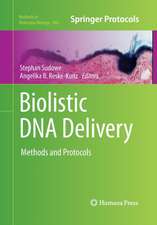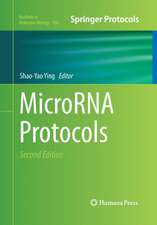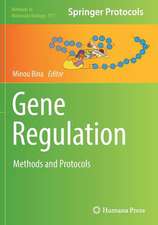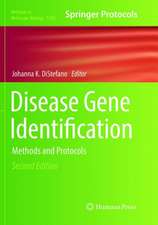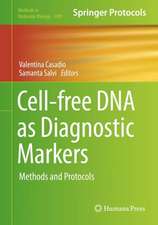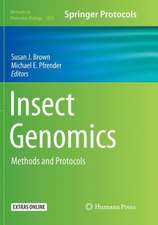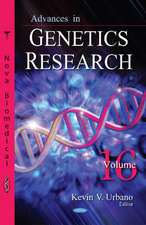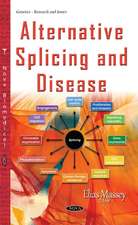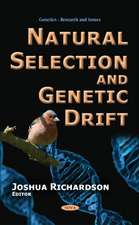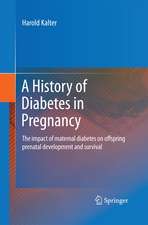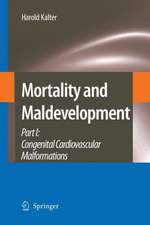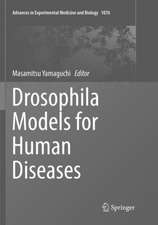Issues and Reviews in Teratology: Volume 3
Autor Harold Kalteren Limba Engleză Paperback – 27 sep 2011
| Toate formatele și edițiile | Preț | Express |
|---|---|---|
| Paperback (3) | 368.93 lei 6-8 săpt. | |
| Springer Us – 27 sep 2011 | 368.93 lei 6-8 săpt. | |
| Springer Us – 5 noi 2012 | 372.19 lei 6-8 săpt. | |
| Springer Us – 22 iun 2012 | 380.45 lei 6-8 săpt. | |
| Hardback (1) | 651.34 lei 6-8 săpt. | |
| Kluwer Academic Publishers – 30 iun 1993 | 651.34 lei 6-8 săpt. |
Preț: 368.93 lei
Preț vechi: 388.34 lei
-5% Nou
Puncte Express: 553
Preț estimativ în valută:
70.60€ • 76.66$ • 59.31£
70.60€ • 76.66$ • 59.31£
Carte tipărită la comandă
Livrare economică 22 aprilie-06 mai
Preluare comenzi: 021 569.72.76
Specificații
ISBN-13: 9781461295105
ISBN-10: 1461295106
Pagini: 316
Ilustrații: XIV, 300 p.
Dimensiuni: 152 x 229 x 17 mm
Greutate: 0.42 kg
Ediția:Softcover reprint of the original 1st ed. 1985
Editura: Springer Us
Colecția Springer
Locul publicării:New York, NY, United States
ISBN-10: 1461295106
Pagini: 316
Ilustrații: XIV, 300 p.
Dimensiuni: 152 x 229 x 17 mm
Greutate: 0.42 kg
Ediția:Softcover reprint of the original 1st ed. 1985
Editura: Springer Us
Colecția Springer
Locul publicării:New York, NY, United States
Public țintă
ResearchCuprins
1 The Role of the Obstetrician in the Prevention and Treatment of Birth Defects.- 1. Introduction.- 2. The Abnormal Conceptus.- 3. Causes of Birth Defects.- 4. Screening for Congenital Anomalies.- 5. Diagnosis of the Abnormal Conceptus.- 6. Management of the Abnormal Conceptus.- 7. The Future.- References.- 2 The Nature and Causes of Spontaneous Abortions with Normal Karyotypes.- 1. Introduction.- 2. Mechanisms of Abortion.- 3. Incidence of Chromosomally Normal Abortuses.- 4. Clinically Implicated Causes of Spontaneous Abortion.- 5. Summary.- 6. Conclusions.- References.- 3 Temporal Trends in Twinning.- 1. Introduction.- 2. Time Trends in Twinning Rates.- 3. The Etiology of Twinning. Some Recent Findings.- 4. The Physiological Mechanism of DZ Twinning.- 5. Hypotheses Related to the Decrease in Twinning Rates.- 6. Conclusion.- References.- 4 Cytogenetic and Clinical Significance of Fragile Sites on Human Chromosomes.- 1. Introduction.- 2. Fragile Sites on Autosomes.- 3. Fragile Site on the Human X Chromosome (Xq27).- 4. X-Linked Mental Retardation without Cytogenetic Manifestation.- 5. Concluding Remarks.- References.- 5 Informative Morphogenetic Variants: Minor Congenital Anomalies Revisited.- 1. Background.- 2. Terminology; Definition.- 3. Quantification of Informative Morphogenetic Variants (IMV): Formal and Comparative Aspects.- 4. The Biology of Informative Morphogenetic Variation.- 5. The Specific and Nonspecific Value of Informative Morphogenetic Variants, Singly and in Combination.- 6. The Use of Specific Aggregates of Informative Morphogenetic Variants for Diagnostic Purposes.- 7. The Application of Numerical Taxonomy to Informative Morphogenetic Variants for the Purposes of Classification and Nosology.- 8. Informative Morphogenetic Variants As Indices of Teratogenic Environments.- 9. How Can the Information Value of Morphogenetic Variants Be Increased?.- 10. The Positive Prognostic and Dysmorphogenetic Significance of Informative Morphogenetic Variants.- 11. Informative Morphogenetic Variants As Components of Predictive Scores for Nonspecific Detection of Congenital Disorders Not Apparent at Birth.- 12. The Value of Informative Morphogenetic Variants in Late Childhood- or Adult-Onset Disease.- 13. Informative Morphogenetic Variants As Sentinel Phenotypes for Monitoring Environmental Teratogenic Hazards in Populations.- 14. Summary.- 15. Epilogue.- References.- 6 The Mouse Trisomies: Experimental Systems for the Study of Aneuploidy.- 1. The Generation of the Mouse Trisomies.- 2. Properties of the Mouse Trisomies.- 3. Mouse Trisomies As Models for Studying the Effects of Aneuploidy and Human Chromosomal Disorders.- References.- 7 Embryonic Induction and Teratology of the Developing Skin and Oral Mucosa.- 1. Introduction.- 2. Embryonic Induction.- 3. Genetic Defects and Mutants As Models for Experimental Studies.- 4. Molecular Teratology: Virus-Induced Genetic Lesions.- 5. Summary.- References.- 8 Fine Structure of Hereditary Defects of the Central Nervous System in Mice.- 1. Introduction.- 2. Sources of Mutant Material.- 3. Methods of Study.- 4. Mouse Mutants.- 5. Other Mutants.- 6. Conclusion.- References.- 9 The Role of Mammalian Embryo Culture in Developmental Biology and Teratology.- 1. Introduction.- 2. Culture Techniques.- 3. Uses of the System.- 4. Disadvantages of the Culture System.- References.



